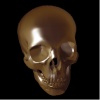Hi everyone !
I use RenderMonkey to try SSAO effect, I need vertex shader output position normal structure like this :
struct VS_OUTPUT
{
float4 position : POSITION0;
float3 normal : NORMAL0;
};
and I make structure for pixel shader to adapt to vertex shader output like this :
struct PS_INPUT
{
float4 position : POSITION1 ;( Here is a problem, when compiled pixel shader, it told me POSITION index from 1 - 15 )
float3 normal : NORMAL0;
};
My question is : In vertex shader output structure position with POSITION0. But pixel shader input structure position is POSITION1.
How could pixel shader find vertex shader output variable - " position " ? They have different semantic !.?
I use RenderMonkey to implement SSAO, But when I check render target "Normal" and "Position" ( Next pass needs these vars ) , I just see
Normal texture is correct result.
I dont know the figure is right or not ? But I try 2 PC have different GPU, they displayed the different pictures.
This can not display the position renderTexture & view renderTexture
[attachment=14649:SSAO 1.jpg]
But on this computer displayed all (I dont know view renderTexture & normalTexture are correct ?)
[attachment=14650:SSAO 2.jpg]






